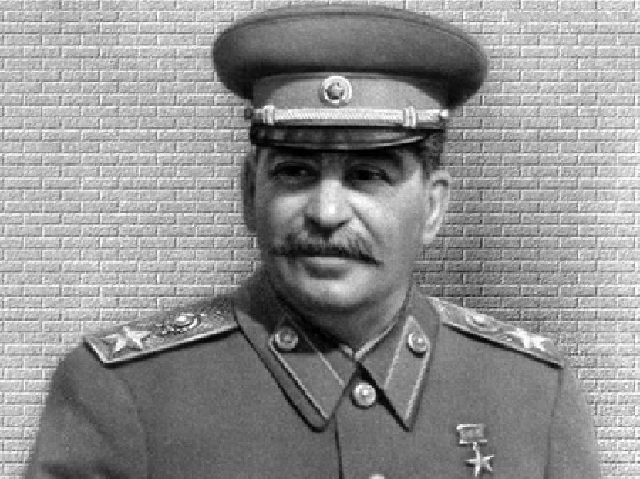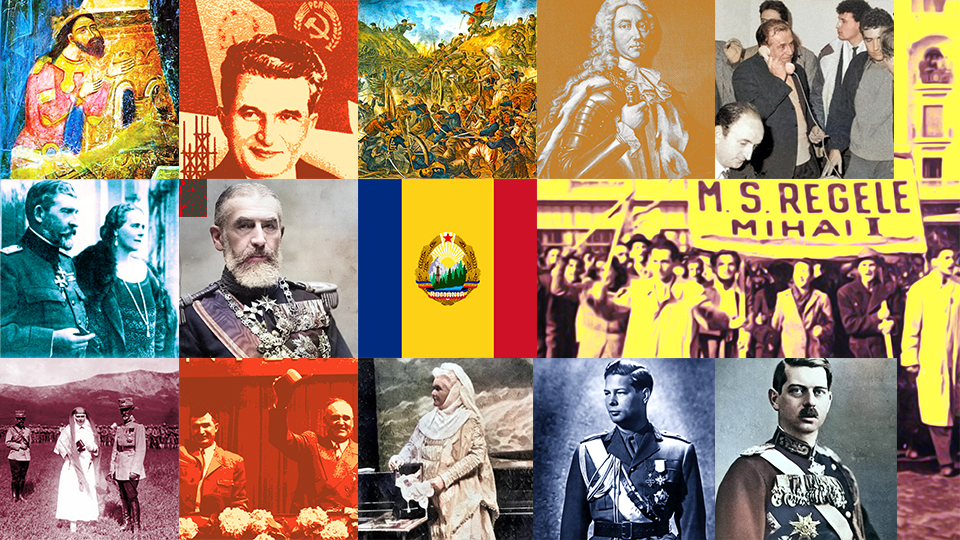Stalin and Stalinism
Iosif Vissarionovici Stalin went down in history as the cruelest criminal.

Steliu Lambru, 18.03.2013, 12:53
Iosif Vissarionovici Stalin, who died on March 5th, 1953, went down in history as the cruelest criminal ever. Stalin earned his gruesome label not because his opponents simply attached it to his personality, but because of the overwhelming evidence of the crimes that were perpetrated during his regime. About such a man we seem to know everything, so much so that 60 years on there’s not much left for us to say about him; what we CAN say, though, are things that can keep our memory alert. Stalin used to be part and parcel of the Soviet Union’s history, through what the Soviet Union actually was between 1945 and 1991. But apart from that, Stalin was part of the history of many other nations. And sadly, he was part of the history of Romanians as well.
Stalinism is the word by means of which mankind’s political thought in its entirety labeled tyranny: the most harrowing form of political governance, where the underlying elements are a single man’s self-will and terror. Stalinism took the practice of tyranny to its highest, also because people and society condoned all that, and also because Stalinist ideology bedazzled all those people.
Liviu Rotman is a professor with the National School of Political and Administrative Studies in Bucharest. He said that people’s being so attached to that ideology and the leader, who in turn was the embodiment of ideology, explains how Stalinism came into being and survived.
“Let me just stress the fact that when we define one particular category of a communist regime we have several ways to approach it. We have the approach during Stalin’s regime, whereby that was the highest form of communist ideology and of its purity. There were Stalinist writers, Stalinist historians, Stalinist actors, Stalinist painters, Stalinist party activists, with the latter eulogizing and paying tribute to the regime. Basically, that meant they were the most determined of the communists; tough and t very energetic. And that stems from Stalin himself, he used that pseudonym for himself, since in Russian stal means steel. The crux of the matter was that his politics was just as tough as the steel, but it was also righteous, for the communist ideals to be fulfilled.”
A layman perception of Stalinism, however, can be misleading. No matter how strongly a single leader’ s self-will manifests itself, a tyrant needs to be credible in front of those supporting him. To put it differently, his political mindset must appear logical to those who pay heed to such a tyrant. Cristian Vasile is a historian with Bucharest’s “Nicolae Iorga” History Institute. He will now be highlighting what Stalin’s political thought actually consisted of.
“Erik Van Ree, a specialist in the Soviet political system wrote a seminal book, The Political Thought of Joseph Stalin. Why is the book so important? Because in the Russian archives Erik Van Ree had the chance to examine a certain type of historical source, a document of a certain type. Namely the notes in the books in Stalin’s personal library, even Stalin’s own notes, which are quite a few. That source of information was excellent and Erik van Ree put it to extremely good use. That particular source somehow altered the perception and representations of Stalin and Stalinism, mainly as regards their sources of inspiration. Where did Stalin draw his inspiration from, what were the sources of inspiration for his political thought? Van Ree thought we could speak about a coherent and well-grounded mindset in the case of Stalin. And what did Erik Van Ree actually discover? Subject to heated debate in Western historical research was Stalin’s main source of ideas: was it the Russian autocratic tradition, from Ivan the Terrible to Peter the Great as a modernizer, whom Stalin took as a role model, or was it the Western Marxism, the revolutionary movement in the West? Van Ree found out that one of Stalin’s main sources might have been the western revolutionary tradition, the Jacobin tradition. And he also found the notes Stalin made to that effect, notes that were of course filtered through the Leninist thought.”
After the collapse of communism, quite a few authorized voices laid the blame of that disaster on the Soviet leaders’ inability to implement the writings of Marx. Liviu Rotman was keen on highlighting the essentially Stalinist streak of the communist regime, and the communist regime’s impossibility to properly function under circumstances other than those of tyranny.
” I believe that Stalin, through his terror, through his system of policies, maybe meant the purest form of communism. By and large, when attempts were made to do away with the Stalinist clichés, communism, as early as Khrushchev’s regime, would snap at its seams, would simply fail to fulfill its mission. That is why even the Soviets had their comeback to Stalinism during the Brejnev regime, who, without making it public, tried to return, no Russian-fashion this time, to the Stalinist system of practices. In the satellite countries, Romania included, that image of Stalin was tarnished, it was subject to criticism, and his statues simply disappeared. But that was only on the face of it, the continuity of communism had called for the preservation, one way or another, and differently from one country to another, of Stalinism, and all that quietly. I’m saying that because any negative remark targeting Stalin’s communism targets Stalin himself. It’s just as if post-Stalinist or the pre-Stalinist communism were more human, were getting closer to the nature of man, to the normal course of history.
Stalin and Stalinism acted as models for the societies with deficit of democracy. The democratic world also had its bouts of sympathy for his leadership, which revealed that democracy was not something pre assigned, capable of working with no gaps and flaws. There used to be greater or lesser Stalins who did not fail to stand on a par with the original. But as always, the truth came out, since the truth is not only a philosophical, but also a historical concept.






























